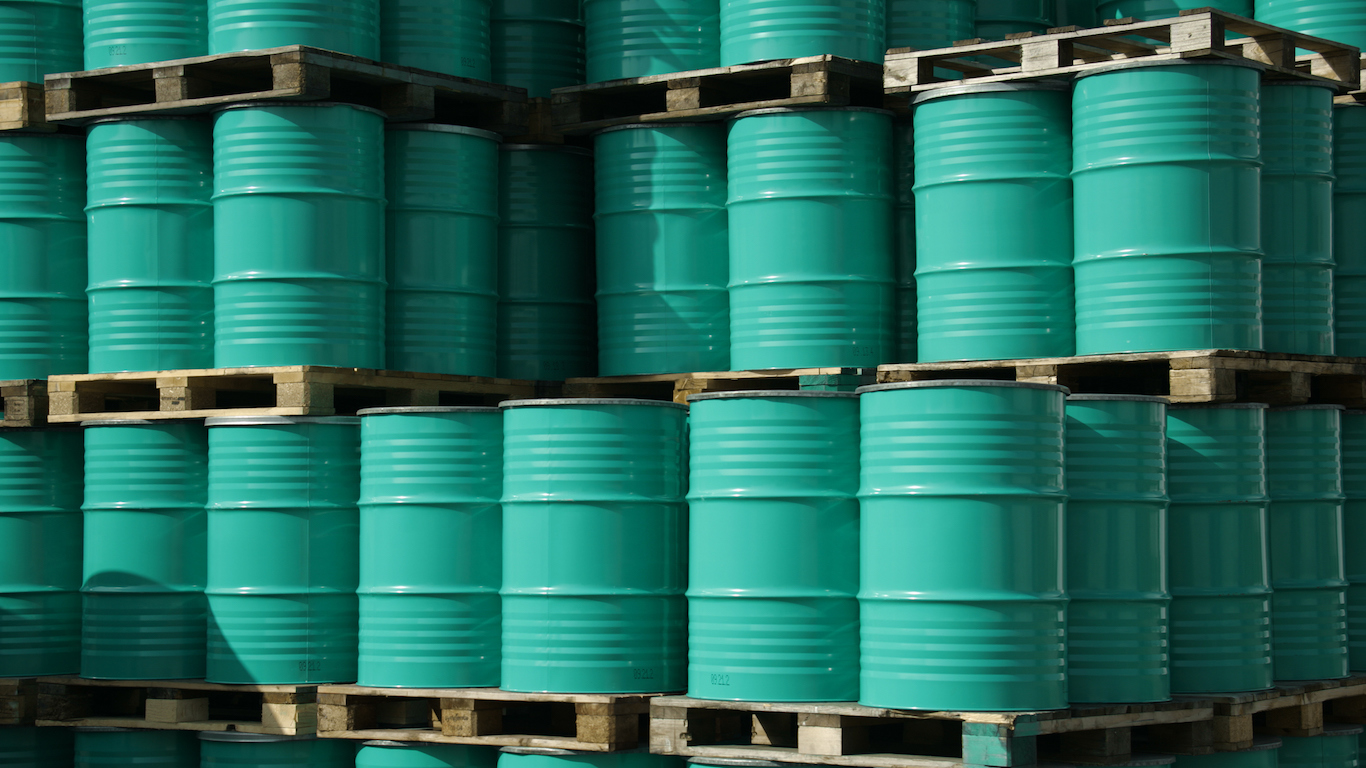
The U.S. Energy Information Administration (EIA) released its weekly petroleum status report Wednesday morning showing that U.S. commercial crude inventories increased by 3.2 million barrels last week, maintaining a total U.S. commercial crude inventory of 426 million barrels. The commercial crude inventory is now about 2% higher than the five-year average for this time of year.
Tuesday evening the American Petroleum Institute (API) reported that crude inventories increased by about 5.69 million barrels in the week ending October 26. Gasoline inventories decreased by 3.5 million barrels and distillate stockpiles dropped by about 3.1 million barrels. For the same period, analysts expected crude inventories to increase by about 4.1 million barrels. Gasoline inventories were seen down about 2.1 million barrels, and distillate inventories were also expected to fall by about 1.4 million barrels.
Before the EIA report, benchmark West Texas Intermediate (WTI) crude for December delivery traded down about 0.4% at around $65.83 a barrel, and it traded at $65.99 shortly after the report’s release. WTI for December delivery opened at $66.32 Wednesday morning, up about 0.2% from Tuesday’s settlement price of $66.32. The 52-week range on December futures is $52.44 to $76.72.
Crude oil futures have taken a beating in October. December futures were down about 13% for the month as of Tuesday’s settlement. The decline is a reaction to a more slowly growing global economy. That leads to a drop in demand for oil, which leads to less investment in exploring for and producing more oil. Prices fall until demand rises enough to push the price of crude high enough for drillers to make a profit and then, typically, the cycle repeats.
OPEC has tried to support oil prices by cutting output and may try to do so again in conjunction with invited partners like Russia. But if history is any guide, the cartel will lose market share to other producers and eventually will be forced to accept the market reality.
Will this be how the current downturn in crude prices will turn out? It’s not guaranteed, but it’s a decent bet.
Total gasoline inventories decreased by 3.2 million barrels last week, according to the EIA, and remain about 6% above the five-year average range. U.S. refineries produced about 10.4 million barrels of gasoline a day last week, up by around 400,000 barrels compared with the prior week. Total motor gasoline supplied (the agency’s proxy for demand) averaged 9.2 million barrels a day for the past four weeks, about flat compared with the prior week’s average.
Week over week, U.S. crude oil exports rose by 305,000 barrels a day last week and U.S. production rose by 300,000 barrels to 11.2 million barrels a day. Exports averaged 2.49 million barrels a day last week and have a cumulative daily average for the year of 1.87 million barrels a day, a 107% increase over the year-ago export total.
Distillate inventories fell by 4.1 million barrels last week and are about 5% below the five-year average range for this time of year. Distillate product supplied averaged 4.2 million barrels a day for the past four weeks, up by about 100,000 barrels compared with the prior week’s average. Distillate production averaged 5 million barrels a day last week, unchanged compared with the prior week’s production.
For the past week, crude imports averaged 7.3 million barrels a day, down by 334,000 barrels a day compared with the previous week. Refineries were running at 89.4% of capacity, with daily input averaging 16.4 million barrels a day, about 149,000 barrels more than the previous week’s average. Exports of refined products rose by 6,000 barrels a day last week to remain at about 5.35 million barrels a day.
Rising crude oil production is being partially offset by low refinery utilization. While last week’s numbers appear to support higher prices, that support is weak and is likely to collapse in front of the next little breeze.
According to AAA, the current national average pump price per gallon of regular gasoline is $2.80, down more than four cents from $2.844 a week ago and down by more than 7.5 cents compared with the month-ago price. Last year at this time, a gallon of regular gasoline cost $2.469 on average in the United States.
Here is a look at how share prices for two blue-chip stocks and two exchange-traded funds reacted to this latest report.
Exxon Mobil Corp. (NYSE: XOM) traded up about 1.8%, at $80.16 in a 52-week range of $72.16 to $89.30. Over the past 12 months, Exxon stock has traded down about 3.9%.
Chevron Corp. (NYSE: CVX) traded up about 1.4%, at $112.36 in a 52-week range of $108.02 to $133.88. As of last night’s close, Chevron shares are trading down about 2.1% over the past year.
The United States Oil ETF (NYSEARCA: USO) traded up about 0.3%, at $14.07 in a 52-week range of $10.82 to $16.24.
The VanEck Vectors Oil Services ETF (NYSEAMERICAN: OIH) traded up about 0.9%, at $21.03 in a 52-week range of $20.10 to $29.87.
Are You Ahead, or Behind on Retirement?
If you’re one of the over 4 Million Americans set to retire this year, you may want to pay attention. Many people have worked their whole lives preparing to retire without ever knowing the answer to the most important question: am I ahead, or behind on my goals?
Don’t make the same mistake. It’s an easy question to answer. A quick conversation with a financial advisor can help you unpack your savings, spending, and goals for your money. With Zoe Financial’s free matching tool, you can connect with trusted financial advisors in minutes.
Why wait? Click here to get started today!
Thank you for reading! Have some feedback for us?
Contact the 24/7 Wall St. editorial team.




